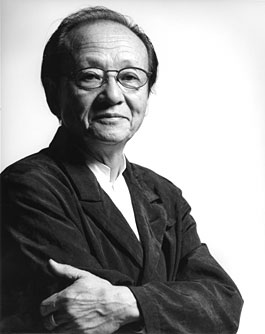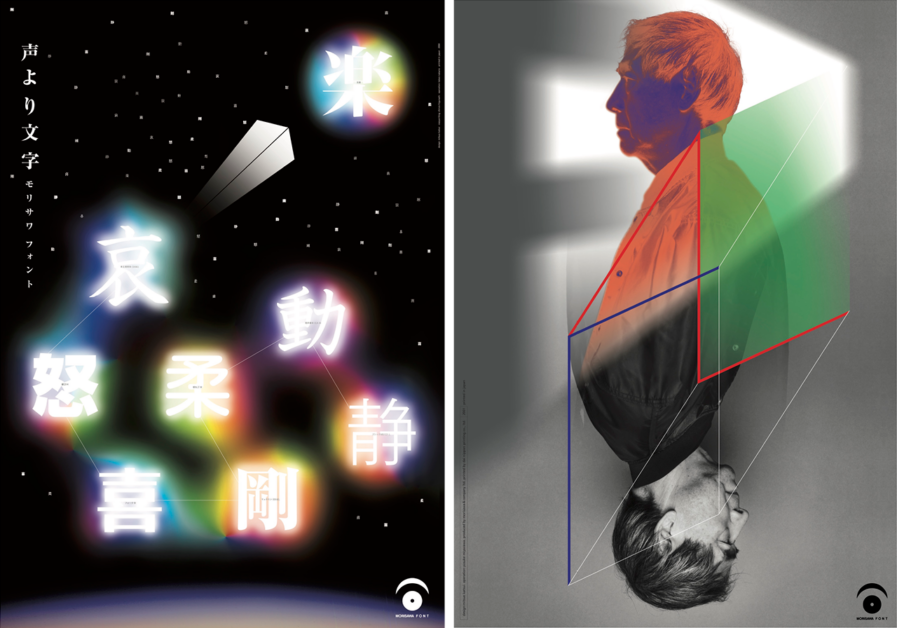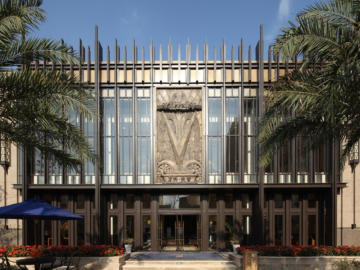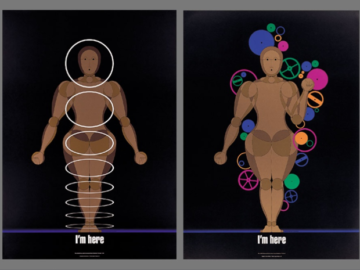Learn about Mitsuo Katsui‘s (1931–2019) groundbreaking journey as a master of modern graphic design in an exclusive excerpt from the Graphis Journal. Explore how Mitsuo’s innovative use of technology transformed visual culture and led iconic expositions in Osaka, Okinawa, and Tsukuba.
Introduction by Toshiaki Ide, Founder & Partner, IF Studio
When I grew up in Japan, we were searching for hope, products were poorly made—and Mitsuo Katsui, third in a lineage from Yusaku Kamekura and Ikko Tanaka, gave us the vision of how our design would evolve in post–World War II Japan. Katsui added another dimension to Japanese design by building on bold shapes, textures, and colors through an emphasis on movement, light, and shadow. With his colorful forms, the typical flat dimension of Japanese design emerged from the page, evoking emotions not before expressed: nostalgia combined with constant change. In this way, his work is revolutionary. It is like Katsui sees the world inside out.

What inspired or motivated you in your career?
Knowing historic facts inspired me to create.
What is your work philosophy?
Having a good knowledge of my background. I receive inspiration for the subject at hand by first having a knowledge of history and who I am.
Who is or was your greatest mentor?
Professor Masato Takahashi. He was my teacher and he initiated new design education in Japan.
What is the most difficult challenge you’ve had to overcome?
It’s learning how to collaborate with many people and finding innovative ways to build upon the power of partnerships.
How did you make the transition to designing on the computer?
In my youth, I was interested in the expressive capabilities of technology. I was thinking there existed elements of creation within these new media forms, so I shifted to digital instruments naturally.
Your career is still going strong. How do you keep up your creative inspiration?
I am inspired and stimulated to react to things present in ordinary life. I can be interested in even the most casual encounters; it’s an innate sensitivity.
What are the most important ingredients you require from a client to do successful work?
Purpose and clarity in regard to the project.
What is the greatest satisfaction you get from your work?
A sense of fulfilment and accomplishment that the thing which I imagined got closer to completion.
Who are your favorite people or clients you’ve worked with?
Tadao Umesao, a professor of cultural anthropology at the National Museum of Ethnology, whom I met when I worked with a lot of scholars starting up the encyclopedia and natural history museum. There were many things cultivated in the relationship with them. I was inspired by their combined knowledge.
What professional goals do you still have for yourself?
I will feel a sense of accomplishment if I can make an impressive thing which uses light and color as means of communication.
Who were some of your greatest past influences?
László Moholy-Nagy.
What advice would you have for students starting out today?
Think about the future to gain perspective while knowing the recorded past and history. Vision is the most important thing.
What interests do you have outside of your work?
Incidents happen in the world. I am always conscious of international disasters such as war or the nuclear power generation. These are the evils human beings endure.
What do you value most?
I believe the beauty that each one of us can bring about in the world will be what allows us to respect differences in one another. I want to be careful of the thing which is only based on economic gain.
Where do you seek inspiration?
I seek inspiration in the gaps between daily action. I create by burying this gap.
How do you define success?
Success isn’t a thing; it’s something the spirit grasps for. We do not get closer to success without the desire to improve oneself.
Where do you see yourself in the future?
At the moment, it’s unknown. I do not yet fully understand the true meaning of the self.
Mitsuo Katsui (1931–2019) was credited with pioneering new forms of visual expression via new technologies. In addition to engaging in the full spectrum of graphic design, Katsui served as art director of the Japan World Exposition in Osaka (1970), the International Ocean Exposition in Okinawa (1975), and the International Exposition of Science and Technology in Tsukuba (1985). He was a Professor Emeritus at Musashino Art University, a member of the Board of Directors of JAGDA, and a recipient of numerous design awards.






